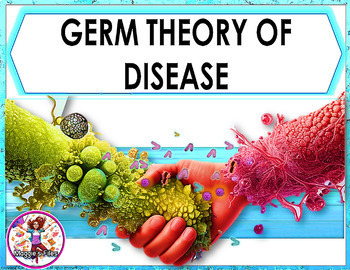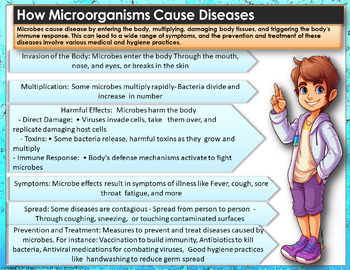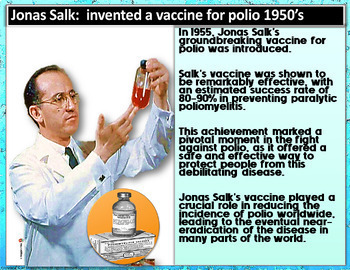GERM THEORY OF DISEASE- PPT AND NOTES
- Zip
What educators are saying
Description
The Germ Theory of Disease: Dive into comprehensive education with a 39-slide PowerPoint and 9 pages of interactive student notes in PDF format. This slideshow is enriched with 3 formative and 1 summative assessment, along with an answer key for a thorough learning experience
Key Topics Explored:
- Essential Terms to Know
- Germ Theory: Fundamentals and Definitions
- Microorganisms and Pathogens
- Transmission of Disease and Prevention
- Treatment Methods Throughout History
- The Great Plague of London
- Discovering Microorganisms
- Debunking the Spontaneous Generation Theory
- Redi's Groundbreaking Experiment
- Major Contributions of Renowned Figures, including Edward Jenner, Ignaz Semmelweis, Joseph Lister, Louis Pasteur, Robert Koch, Florence Nightingale, William Stewart Halsted, Alexander Fleming, Jonas Salk, and Allen Steere
- Latest Discoveries in COVID-19 Research
- The Germ Theory Revolution: Transforming Healthcare Practices
- The Germ Theory Timeline: A Journey Through Scientific Progress
Equip your students for success with three thoughtfully designed formative assessments and a comprehensive summative assessment, ensuring a robust understanding of the material.
^^^^^^^^^^^^^^^^^^^^^^^^^^^^^^^^^^^^^^^^^^^^^^^^^^^^^^^^^^^^^^^^^^^^^^^^
Explore the extensive range of captivating products from Maggie's Files on this topic!
Infectious or Communicable Diseases PPT and Notes
Protista Kingdom PowerPoint presentation and interactive student notes.
Non-Infectious Diseases PowerPoint presentation
Infectious Diseases Interactive Google Slides
Don't miss out on more educational resources and exciting content! Stay connected with us by clicking the green 'follow' button. Visit our store, MAGGIES FILES, for a wide range of educational products that empower both educators and learners. Start your journey into the captivating world of microbiology and disease with us today!
For direct access to our store, please visit MAGGIES FILES.
KEYWORDS:
- "Best PowerPoint presentations on Germ Theory of Disease for classes?"
- "Where to find comprehensive notes on Germ Theory for students?"
- "How to teach Germ Theory effectively in biology?"
- "Engaging Germ Theory lessons for high school students?"
- "Educational resources on disease causation for teachers?"
- "Interactive classroom activities about Germ Theory?"
- "Top-rated teaching materials for Germ Theory of Disease?"
- "What are the best Germ Theory study guides for educators?"
- "Innovative ways to teach disease causation in science?"
- "Comprehensive lesson plans on Germ Theory for middle school?"
- "How to explain Germ Theory to elementary students?"
- "Where can I download Germ Theory educational content?"
- "Effective teaching strategies for Germ Theory in health science?"
- "Interactive Germ Theory notes for college students?"
- "Germ Theory of Disease teaching tools for biology class?"
- "Classroom presentations on pathogens and disease?"
- "Engaging ways to teach about infectious diseases?"
- "Comprehensive guide to teaching Germ Theory?"
- "Best practices in explaining disease causation to students?"
- "Educational Germ Theory activities for science curriculum?"





